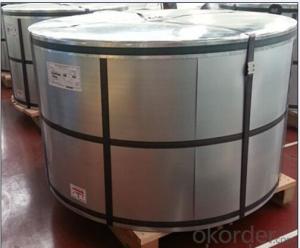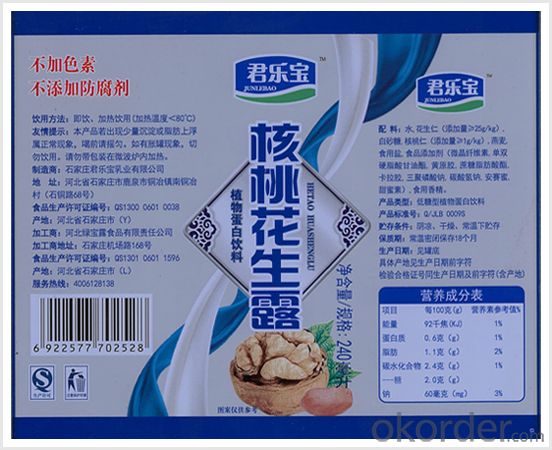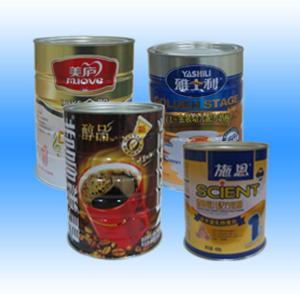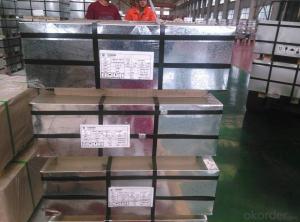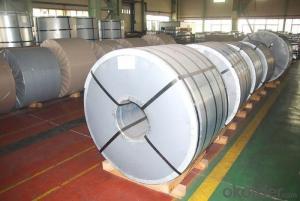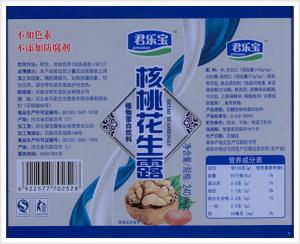Printed Tinplate For Milk Powder, GIS G3303
- Loading Port:
- Tianjin
- Payment Terms:
- TT OR LC
- Min Order Qty:
- 25 m.t.
- Supply Capability:
- 40000 m.t./month
OKorder Service Pledge
OKorder Financial Service
You Might Also Like
1.Usage
Tinplate is widely used for making all types of containers, containing industrial usage such as paint can, oil can, aerosol cans etc., and food cans like milk powder cans, tomato paste can, dry food cans etc.
2. Quality
As a state owned company and a large tinplate supplier in China, our tinplate quality ranks 1st level in China, similar to Bao Steel, Posco etc.
3. Specification
standard: GB/T2520, JIS G3303, DIN EN10202
Material: MR /SPCC
Thickness available: 0.16-0.50MM
Width available: 600~1050MM
Temper grade: T1 – DR8
Tin coating: ordinary 2.8g/2.8g, 5.6g/5.6g and others
Package: sea worthy export package.
Applications: Tin can for chemicals & paint cans, industrial cans, food cans
4. Our factory photo & equipments

5. Our Markets:
now our tinplate has been sold to more than 50 countries, including Europe country, Gulf Area, South American, South Afric etc.
6. Our Overseas Wareouses:
Furthermore, in the year 2014, we have more than 10 overseas warehouses all over the word, located in KSA, UAE, Oman, Russia, Kuwait, Qatar, Oman, Chile, Brazil etc.
7. FAQ
a. what's the annual output?
about 500,000 tons per year.
b. where's the raw matrial from?
our hot rolled coil is purchased from Capital Steel and other state owned mill, with quite good quality.
c. how long is the delivery time?
normally for SPCC about 45~55 days, while 65~75 days for MR material
d. how to control the quality during production process?
inside our workshop, we have MES syestem. It realizes the optimization of the production procedure in the workshop. It could record each step of the whole production procedures, and if some problem appears, factory could easily found and take action, it’s quite helpful to monitor and control the quality.
- Q: What are the main applications of tinplate in the furniture industry?
- Tinplate is primarily used in the furniture industry for the production of decorative metal trims and accents. It is commonly used for creating ornamental elements on furniture pieces such as drawer handles, cabinet knobs, and decorative trimmings. Tinplate's corrosion resistance and malleability make it a suitable material for adding intricate and elegant details to furniture designs while also providing durability and protection against wear and tear.
- Q: What are the applications of tinplate?
- Tinplate has a wide range of applications due to its protective and aesthetic properties. Common uses include packaging cans for food and beverages, aerosol containers, metal caps and closures, electrical components, and even decorative items. Its corrosion resistance and ability to maintain product freshness make it a popular choice for preserving and packaging various goods.
- Q: Can tinplate be used for stationery and office supplies?
- Yes, tinplate can be used for stationery and office supplies. It is a versatile material that can be easily shaped into various forms such as pencil cases, storage boxes, and document holders. Additionally, tinplate is durable, lightweight, and has a visually appealing metallic finish, making it suitable for both functional and aesthetic purposes in the stationery and office supply industry.
- Q: How does tinplate packaging contribute to product protection against moisture?
- Tinplate packaging contributes to product protection against moisture due to its inherent properties. The tin coating on the steel substrate acts as a barrier, preventing moisture from seeping into the packaging and reaching the product. This protective layer ensures that the product remains dry and free from any potential damage caused by moisture, such as rust or deterioration. Additionally, tinplate packaging is often sealed tightly, further enhancing its ability to keep moisture out and maintain the product's quality and freshness.
- Q: What are the main uses of tinplate?
- Tinplate is primarily used for packaging and canning purposes due to its excellent corrosion resistance and ability to maintain the quality and freshness of food products. It is also utilized in the production of metal containers, aerosol cans, bottle caps, and various household items. Additionally, tinplate finds applications in the manufacturing of electrical components, such as transformers and capacitors, as well as in the construction industry for roofing and cladding purposes.
- Q: What is the purpose of tin coating on tinplate?
- The purpose of tin coating on tinplate is to provide a protective barrier against corrosion, as tin is highly resistant to oxidation. Additionally, the tin coating enhances the appearance of the tinplate and allows for easy soldering, making it suitable for various applications such as food packaging and decorative items.
- Q: Can tinplate be used for packaging petrochemical products?
- Yes, tinplate can be used for packaging petrochemical products. Tinplate is a type of steel coated with a thin layer of tin, providing it with excellent corrosion resistance and durability. These properties make it suitable for packaging various products, including petrochemicals, as it can protect the contents from external factors such as moisture and oxygen. Additionally, tinplate cans can be sealed tightly, ensuring the safety and integrity of the petrochemical products during storage and transportation.
- Q: How is tinplate cleaned and maintained?
- Tinplate is commonly cleaned and maintained by first wiping it with a soft cloth or sponge soaked in warm soapy water. Any stubborn stains can be gently scrubbed with a non-abrasive cleaner or baking soda paste. After cleaning, it is important to thoroughly dry the tinplate to prevent rusting. To maintain its shine, applying a thin coat of food-grade oil or wax can help protect the tinplate from moisture and oxidation.
- Q: How does tinplate impact the ease of opening and closing packaging?
- Tinplate has a positive impact on the ease of opening and closing packaging. Due to its durability and strength, tinplate provides a sturdy and reliable structure for packaging materials. This makes it easier to open and close packaging without the risk of tearing or damaging the container. Additionally, tinplate often includes features such as easy-to-use lids or pull tabs, further enhancing the convenience of accessing the contents.
- Q: How does tinplate compare to other packaging materials in terms of recyclability?
- Tinplate is highly recyclable and often considered to be one of the most sustainable packaging materials available. It can be easily separated from other materials during the recycling process and has a high recycling rate, making it a preferred choice for environmentally conscious consumers and industries.
Send your message to us
Printed Tinplate For Milk Powder, GIS G3303
- Loading Port:
- Tianjin
- Payment Terms:
- TT OR LC
- Min Order Qty:
- 25 m.t.
- Supply Capability:
- 40000 m.t./month
OKorder Service Pledge
OKorder Financial Service
Similar products
Hot products
Hot Searches
Related keywords
